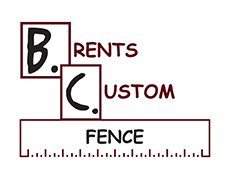Why Fence Installation Austin Matters for Your Property
Fence installation Austin is a smart investment that improves your home’s security, privacy, and curb appeal. To steer the unique challenges of Central Texas, from intense heat and storms to expansive clay soil, choosing the right fence and installer makes all the difference.
Quick Guide to Finding the Right Fence Installer in Austin:
- Choose Your Material: Cedar for natural beauty, ornamental iron for durability, or chain link for affordability.
- Check Local Regulations: Verify permit requirements and HOA guidelines before you start.
- Get Multiple Quotes: Request detailed estimates from experienced local contractors.
- Verify Experience: Look for companies with strong reviews and knowledge of Austin’s climate.
- Confirm Warranties: Ensure both workmanship and materials are covered.
Professional installers understand that Austin fences must withstand extreme climate conditions while complying with city codes. As one homeowner shared, “The work was meticulous, even cutting out where trees were preserved. All went without a hitch.” This attention to detail is what separates professional installation from DIY attempts, especially when dealing with property line verification, utility marking, and proper post depth in Austin’s challenging soil.
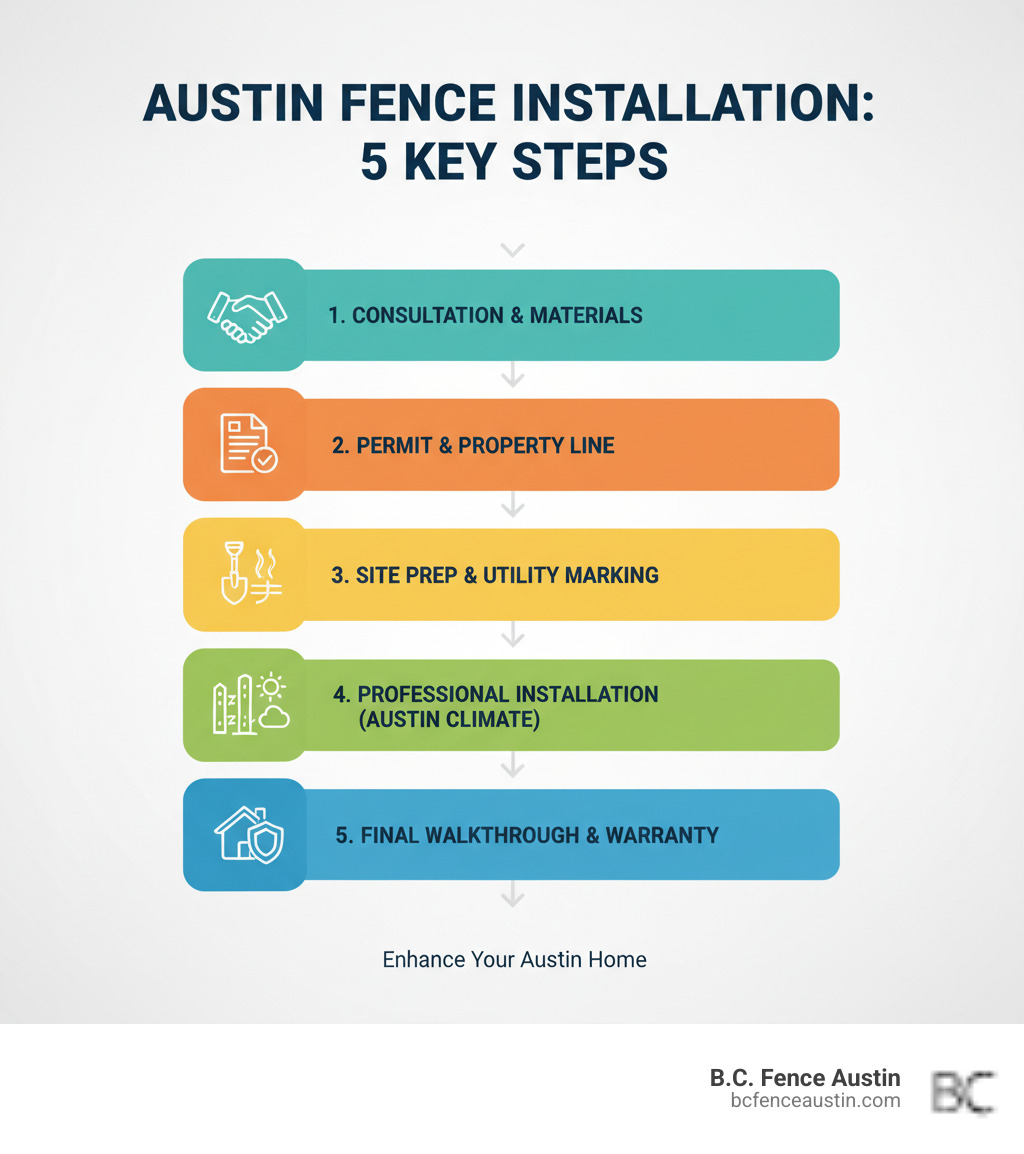
Choosing the Perfect Fence for Your Austin Home
One of the most exciting parts of any fence installation Austin project is choosing the perfect fence for your home. This decision shapes how your property looks and functions for years to come. You’ll want to think about materials that can handle our Texas weather, styles that match your home’s personality, and features that meet your needs for privacy and security.
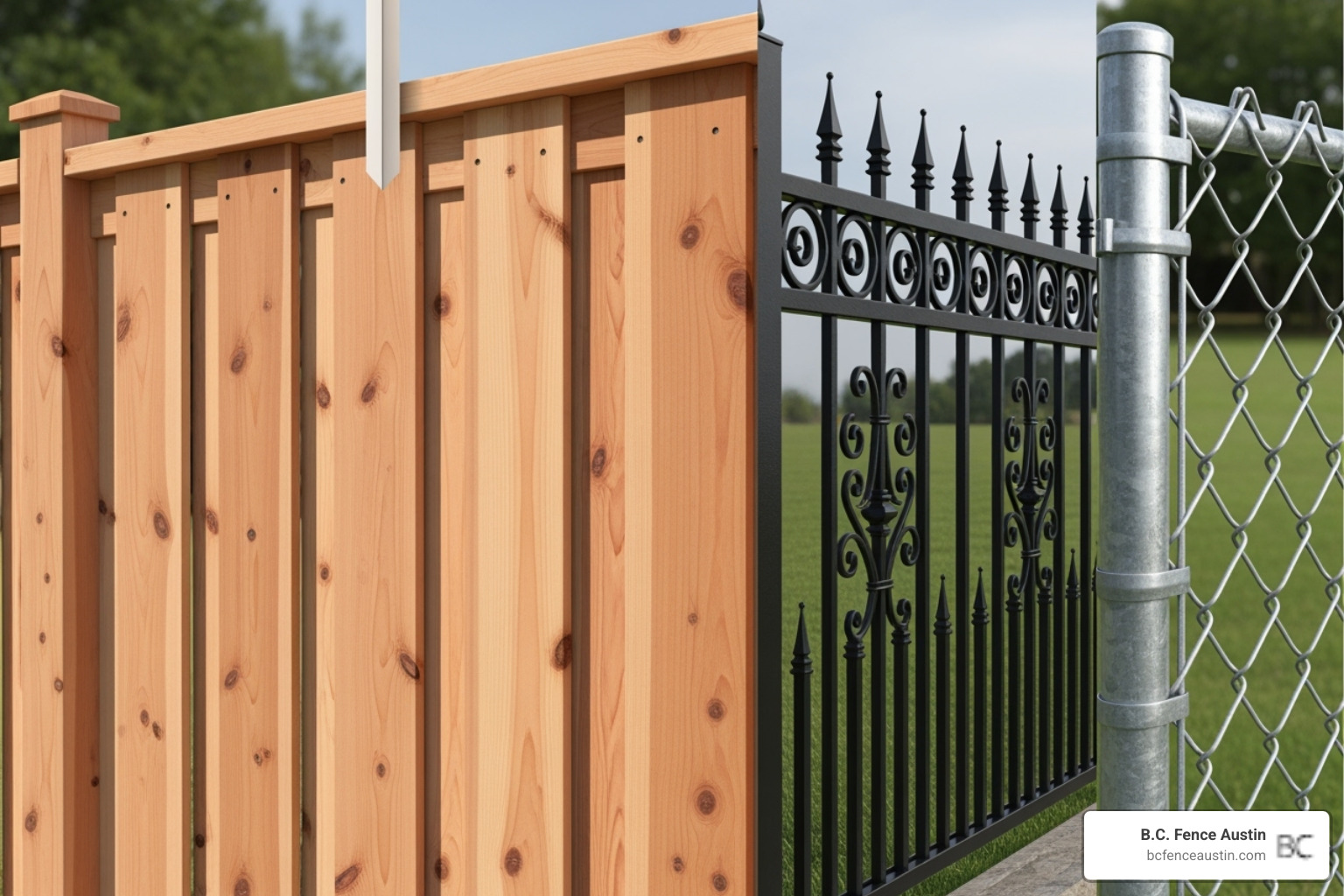
To help you compare your options, here’s how the most popular materials stack up in Austin’s unique climate:
| Feature | Wood Fence (Cedar) | Ornamental Iron Fence | Chain Link Fence |
|---|---|---|---|
| Durability | Good (naturally decay-resistant) | Excellent (best) | Very Good (galvanized steel) |
| Maintenance | Moderate (staining/sealing needed) | Low (occasional touch-up) | Very Low (minimal) |
| Privacy | High (solid panels) | Low (decorative, see-through) | Low (see-through) |
| Style | Natural, classic, versatile | Neat, sophisticated | Practical, utilitarian |
| Austin Climate Suitability | High (cedar resists rot/pests) | High (stands up to heat/storms) | High (weather-resistant) |
Common Fencing Materials and Their Pros & Cons
Let’s dive deeper into what makes each material special for your residential fencing Austin project.
Wood fencing is a classic choice, and cedar is the top pick for Austin. It naturally resists decay, rot, and termites. You can stain or paint it to match your home, offering creative freedom. The trade-off is that wood requires regular cleaning and sealing every few years to protect it from UV damage and moisture.
Ornamental iron fencing brings timeless elegance and serious security. It stands up beautifully to Austin’s heat and storms with very little maintenance. The strength of iron provides excellent security without making your property feel closed off. The main consideration is its lack of privacy, as these fences are designed to be seen through.
Chain link fencing is an incredibly practical and budget-friendly choice. If you need a durable solution for pet containment or want something that requires almost no maintenance, chain link delivers. While its utilitarian look doesn’t add much visual appeal, it’s a smart choice for commercial fencing Austin projects where function and longevity are priorities.
Finding the Right Style for Your Fence Installation Austin Needs
Once you’ve chosen a material, it’s time to think about style.
- Privacy fences, typically 6 to 8 feet tall with solid wood panels, create a secluded backyard retreat and reduce noise.
- Picket fences are shorter (3 to 4 feet) and offer a charming, traditional look for front yards, defining property lines without blocking views.
- Horizontal fences use horizontal planks to create clean, modern lines that are increasingly popular in Austin for their striking look.
- Ranch-style fences, like split rail or post-and-rail, suit larger properties with a rustic character.
Consider your home’s architecture when choosing a style. A thoughtfully designed custom gates Austin can serve as both a security feature and a welcoming focal point that ties your whole fence together. The best fence is one that serves your practical needs while making you smile every time you pull into the driveway.
Navigating Austin’s Fence Rules and Climate Challenges
Building a fence in Austin is about more than just curb appeal. You’re up against intense Texas heat, severe storms, and infamous expansive clay soil that shifts with moisture changes. Add in pests like termites, and it’s clear why a professional approach to your fence installation Austin project is so important. These issues are among the Top 5 Reasons to Install a Fence in Austin, Texas and highlight why quality installation is essential.
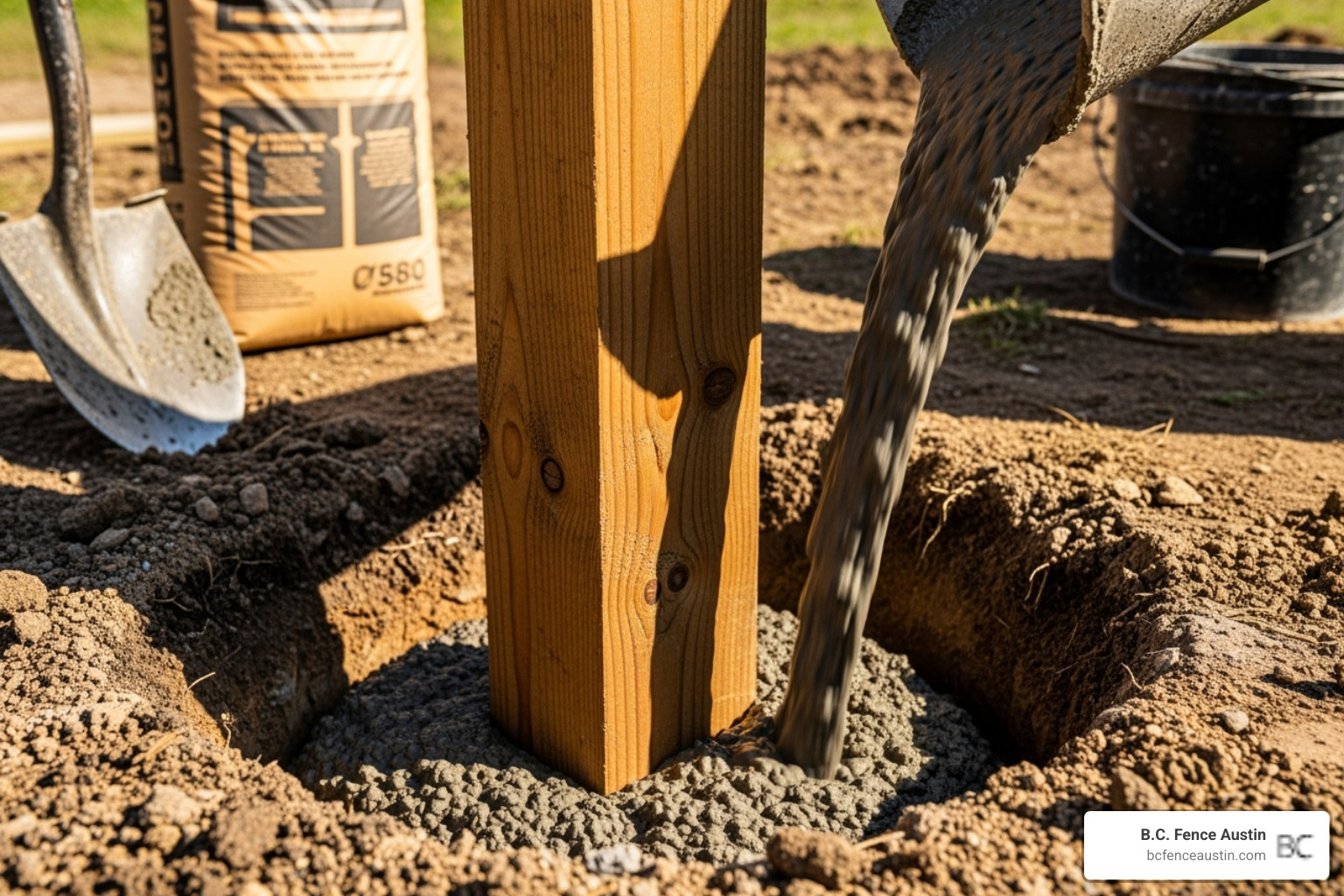
Understanding Austin Fence Permits and Regulations
Before you start, you need to know the rules. Ignoring the City of Austin’s codes can lead to expensive delays.
- Permits: Do you need one? Fences over 8 feet tall typically require a permit. It’s best to check the official Austin fence regulations or work with a professional installer who knows the requirements.
- Height & Property Lines: The city has height restrictions, especially in front yards. You must also verify your property lines to avoid disputes with neighbors.
- HOA Rules: If you’re in a Homeowners Association, you’ll have another layer of rules covering materials, styles, and colors.
- Pool Fences: Austin has strict safety requirements for pool fences, including self-closing gates and minimum heights, to prevent accidents.
- Commercial Fencing: For a business, commercial fencing Austin involves more complex regulations than residential properties.
How Professional Installation Combats Local Issues
This is where professional fence installation Austin proves its worth. Experts combat Austin’s environmental challenges with proven techniques.
Our expansive clay soil requires posts to be set at the proper depth (typically 24-36 inches) in substantial concrete footings to prevent leaning. Professionals also use weather-resistant materials, like cedar for its natural durability or galvanized steel posts for superior longevity.
To fight the intense sun, proper staining and sealing is essential for wood fences. A quality stain creates a protective barrier against UV rays and moisture. Professionals also consider drainage to prevent water from pooling at the base of your fence, which leads to rot. Finally, they use heavy-duty gate hardware on custom gates Austin to ensure they can handle frequent use and exposure to the elements. These details are what make a professionally installed fence last for decades.
The Professional Fence Installation Austin Process
When you decide to move forward with a fence installation Austin project, understanding the process can take away much of the stress. Working with experienced professionals means you have a team handling the details from start to finish.
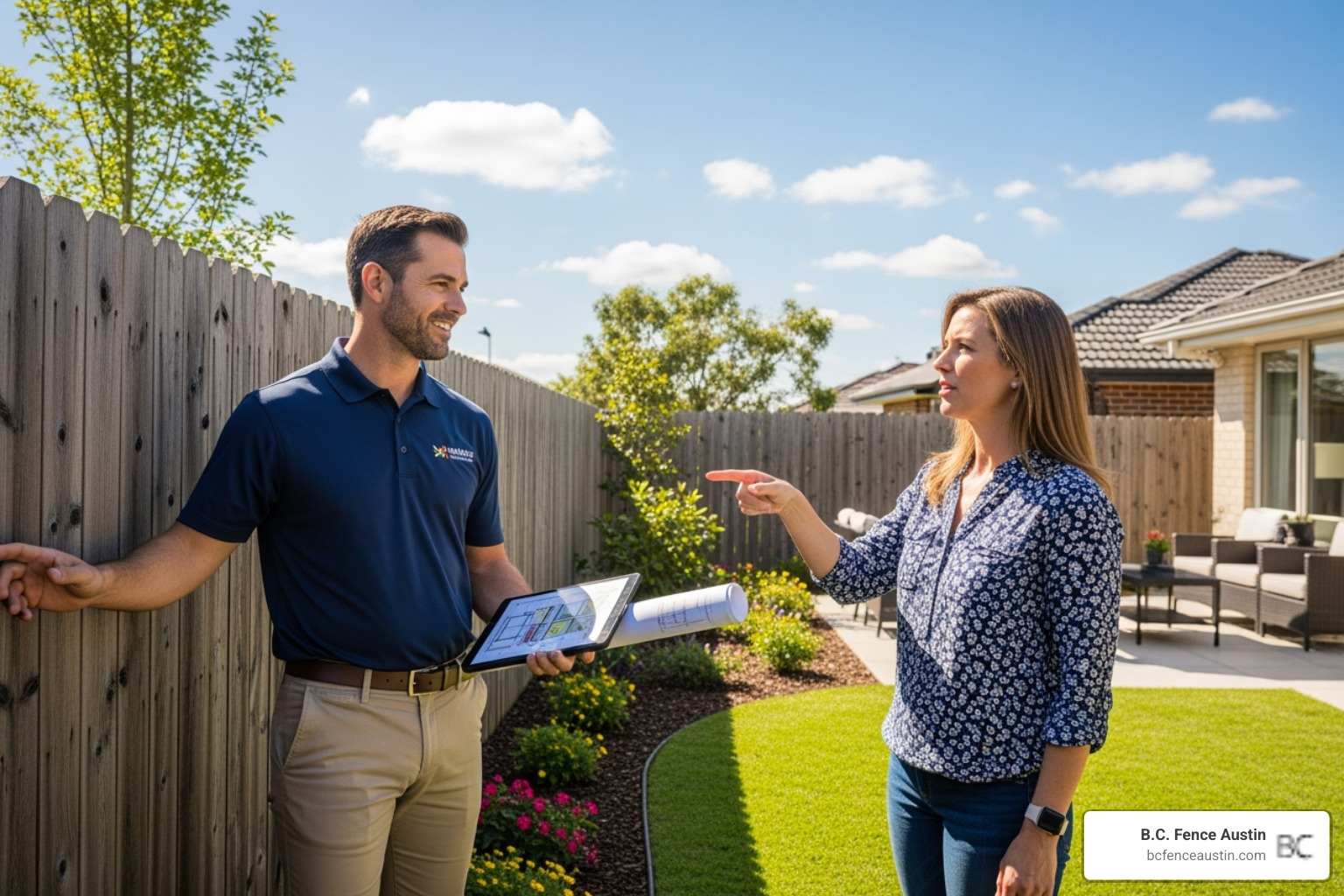
Key Steps in Your Fence Installation Austin Project
The journey with most fence contractors Austin follows a clear path:
- Initial Consultation: A discussion to understand your vision, budget, and timeline. Many contractors offer free consultations.
- Detailed Estimate: You’ll receive a clear breakdown of costs for materials and labor, with no hidden surprises.
- Site Survey & Utility Marking: Property lines are verified, and underground utilities are marked to prevent costly accidents.
- Old Fence Removal (if needed): The old structure is carefully dismantled and hauled away.
- Post Setting: This is the foundation. Posts are set deep in concrete footings to withstand Austin’s soil and storms.
- Panel or Picket Installation: Your vision comes to life as the fence sections are installed, leveled, and secured.
- Gate Hanging: Any custom gates Austin are installed with quality hardware for smooth, secure operation.
- Final Walkthrough: You’ll inspect the finished work with the contractor to ensure you’re happy and discuss warranty and maintenance.
Preparing Your Property and What to Expect
A little preparation makes the installation smoother. Clear the fence line of any bushes or debris. It’s also thoughtful to inform your neighbors about the upcoming work. On installation day, be sure to secure your pets in a safe place away from the construction area.
Most residential fence installation Austin projects take two to five days, depending on the fence length, material, and terrain. While work can be done year-round, spring and fall offer the most comfortable conditions for installation. Your contractor will provide a specific timeline for your unique project.
Ensuring Long-Term Value: Warranties, Maintenance, and DIY vs. Pro
When we’re ready to move forward with fence installation Austin, one of the biggest questions is whether to tackle it ourselves or hire professionals. While DIY can seem tempting, installing a fence in Austin is complex. Between our challenging clay soil, intense heat, and city regulations, a lot can go wrong without expertise.
Professional installers bring years of experience with Austin’s unique conditions. They have the specialized tools and know-how to ensure your fence stands straight for decades, whereas a DIY attempt might start leaning after the first big storm. As explained in Why B C Fence Should Install Your Fence, the longevity and quality of professional work simply can’t be matched. A pro job is done right the first time, typically in just 2-5 days, and comes with valuable warranties.
Warranties and Guarantees to Look For
A quality fence is an investment that deserves protection. Look for contractors who offer:
- Workmanship Warranty: This covers the installation quality. A 1-year warranty is standard, but some reputable contractors offer longer coverage. It ensures that any issues from installation errors will be fixed at no cost.
- Materials Warranty: This protects against defects in the fencing products themselves, usually provided by the manufacturer.
Warranties are only as good as the company behind them. Check customer reviews and look for contractors with extensive local experience. A company that understands Austin’s climate and has a proven track record is your best bet. You can Search for Fence Builders Austin, TX to find companies with established reputations in our community.
Best Practices for Fence Maintenance in Austin
A little ongoing care will keep your new fence looking great for years.
- Regular Cleaning: A gentle wash with soap and water a couple of times a year removes Austin’s dust and pollen.
- Staining and Sealing (for wood): This is your best defense against the Texas sun. A quality stain protects wood from fading and cracking. Re-apply every 3-5 years, or consider hiring Fence Stain Contractors Austin for a professional job.
- Storm Damage Inspections: After a severe storm, walk your fence line to check for loose boards or shifted posts.
- Gate Maintenance: Check and tighten gate hardware periodically to ensure it swings smoothly and latches securely.
- Pest Prevention: Regularly inspect wood fences for signs of termites, especially near the ground.
Frequently Asked Questions about Fence Installation in Austin
We know that planning a fence installation Austin project comes with plenty of questions. Here are answers to some of the most common ones we hear from Austin homeowners.
Do I need a permit to build a fence in Austin?
It depends. In Austin, permit requirements typically hinge on your fence’s height and location. Fences over 8 feet tall generally require a permit, and rules can vary by zoning district. The best approach is to check with the City of Austin Development Services Department. Better yet, work with a professional fence installation Austin company. They are familiar with local codes and handle the permitting process as part of their service, saving you time and preventing potential issues.
What is the best fence material for the Austin climate?
The “best” material depends on your priorities: budget, style, and maintenance tolerance. However, some materials perform exceptionally well in Austin’s climate.
- Cedar Wood: A top choice for its natural resistance to decay and insects like termites. It handles the Texas heat well but requires staining every few years.
- Ornamental Iron: Extremely durable against sun and storms, offering excellent security with low maintenance. It does not provide privacy.
- Chain Link: A budget-friendly, low-maintenance workhorse. It’s highly durable and practical, especially for large yards or commercial fencing Austin projects.
A professional can help you weigh the pros and cons to find the perfect fit for your home.
How long does a typical fence installation take?
Most residential fence installation Austin projects are completed within 2 to 5 days. The exact timeline depends on several factors, including the length of the fence, the material chosen, and the terrain of your property. A straightforward project on level ground will be quicker than a complex installation on a rocky, sloped yard. Your contractor will provide a specific, customized timeline with your estimate so you know exactly what to expect.
Conclusion
Your home deserves a fence that does more than just mark a boundary. A professionally installed fence transforms your Austin property into a secure haven, gives you the privacy you crave, and adds real value to your investment.
Throughout this guide, we’ve covered what makes a fence installation Austin project successful: choosing the right materials like cedar or iron to withstand our climate, understanding local regulations, and working with an experienced contractor who knows our unique soil and weather. Professional installation ensures your fence is built to last, from setting posts deep in concrete to using the right hardware.
At B.C. Fence Austin, we’ve built our reputation on understanding what Austin properties need. We know the local codes, we’ve worked through every weather condition, and we’ve helped countless neighbors create beautiful, lasting fences.
Ready to get started? For expert guidance and a seamless project, contact our team of Austin fence professionals today. Let’s build a fence that protects what matters and stands the test of time in our wonderful Austin climate.
